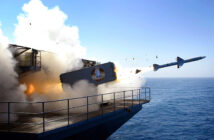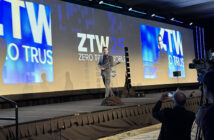Panel session with Anand Oswal, Senior VP Engineering (Enterprise Network) for Cisco Global, Dave West, VP Architectures for Cisco APJ, Jan Dethlefs, Associate Director, Facilities Service Standards, University of Melbourne and Chris Locke, CIO of Flight Centre.
The Cisco DNA is based on an evolved network infrastructure, with network fabrics, virtual functions and Application and data hosting. The enterprise controller manages automation, analytics and assurance. Orchestration and service management houses the service catalogue, policy definition and toolsets. These three platforms are cloud enabled for centralised management and flexible operation, and protected with security and compliance for policy enforcement and threat mitigation. Across the stack is the Operations, Governance and Organisation for incident management, business intent, process and services. The enterprise network compute system provides the virtualisation system, so customers can virtualise services and run their own branches with network functionality, firewall and WAN optimisation and that needs to be run across the infrastructure. Cisco has made this available for the enterprise.
Cisco has also released an adviser tool to allow customer’s to go through a methodology and understand where they are in the process. Customers may be manual today but want to get to a self-driving, automated process tomorrow – the adviser tools allow them to go through the process of taking advantage of the digital networking architecture. According to Dave West, “The greatest traction around the world is probably in Europe but the second is in the Australia and NZ market. It’s a progressive market and customers are thinking ahead – they are seeking more cognitive learning and analytics are driving a 5x to7x growth. Customers are experimenting and figuring out how to start driving automation and maintaining simplicity in the architecture. The ANZ market is a fast adopter and the uptake has been strong, in particular for security products such as Threat Grid.”
Jan Dethlefs confirmed the University of Melbourne is uniquely situated for embracing technology with its proximity to the CBD. With seven campuses in Victoria, including the main campus in the CBD, the university has 55,000 students, expanding to 65,000 and 6,500 staff across the campuses, as well as a rural campus. The University of Melbourne is ranked as the top Australian university and thirty-third in the world. Their key priorities are looking at three strands, being teaching and learning, research and engagement. The challenge is enhancing the best research environment with the engagement strand and the main objectives are bridging to activities, industry and a priority link to the City of Melbourne.
The University of Melbourne is using location analytics and leveraging the technology for decision making. Jan Dethlefs explained, “we started working on this a year ago, and wanted to learn how do visitors, students and staff experience the campus and across spaces. We know how they attend classes but what about when they’re not at class. Where do we put cafes, infrastructure, which buildings are the most used and when? Some places are more popular than other places. From a pure utilisation point of view, we have come to better understand what they do when outside the classes. The Melbourne Metro Rail will also have implications on the campus life with an underground rail line and will provide a station directly on campus. But for 5 years we will have a construction site on campus and this will be a big 400-metre-long hole, cutting the campus in half. We wanted to know how this will impact on building occupancy and analysing the traffic as it is now. We learnt that we have about 20-25,000 people crossing this space on a daily basis, so the impact will be massive. We have to examine timetabling and people movement so we limit the impact and reduce impacts on the campus experience.
We are measuring success in a variety of ways but a good example is the Melbourne School of Design building which is the most popular building on campus. We know this from analysing the data. The building was designed to be a meeting place for all kinds of students, so for the first time we are able to prove the concept of the building, which has worked perfectly well. We have the ability to prove concepts of space design and can use these outcomes for future buildings and design.
Chris Locke, CIO Flight Centre explained the travel agency has interests in 13 countries and in Australia has 1,100 sites across the country and continuing to grow and make acquisitions. The key business priorities is growth as an organisation and the traditional growth pattern is under some strain. As a result, Mr. Locke explained, “we are turning to knowing the customer better and knowing the data we have and leveraging that information. We have introduced Cisco Meraki into the business and have embarked on this just over six months ago. We have progressed to 60-70% into the roll out.” Meraki is the cloud managed portfolio of Cisco’s networking products. “We have deployed in some flagship stores and our Brisbane headquarters, which houses about 1,700 people. The first focus was on work and mobility, so staff can roam anywhere in the building and this is the same in flagship stores. Staff can go home and continue to work if necessary. Plus, we will know who the customer is when they walk into the store or even if they walk passed the store. We know if they have looked at a holiday and allows us to personalise the offer. This has not yet been deployed but is a journey for us and will be an Opt in for customers. The Flight Centre board is very cognisant of security and security is a big part of what we do.”
“Some of the challenges being assisted is in the resourcing space. At a skill level, it is getting harder to get and maintain. Maraki provides a simplified administration model and allows rolling out VoIP across the stores and gets more value out of the network and more carrier independent. The outcomes are a modernisation program for branches, customer insight data, ICT administration and these are all big factors for us.”
Chris Cubbage, Executive Editor






